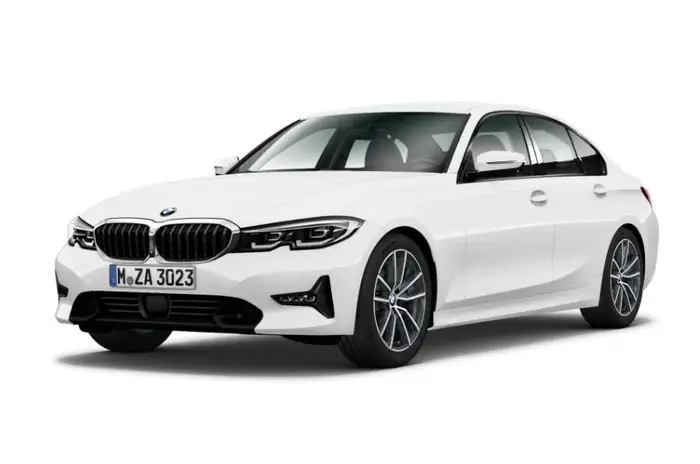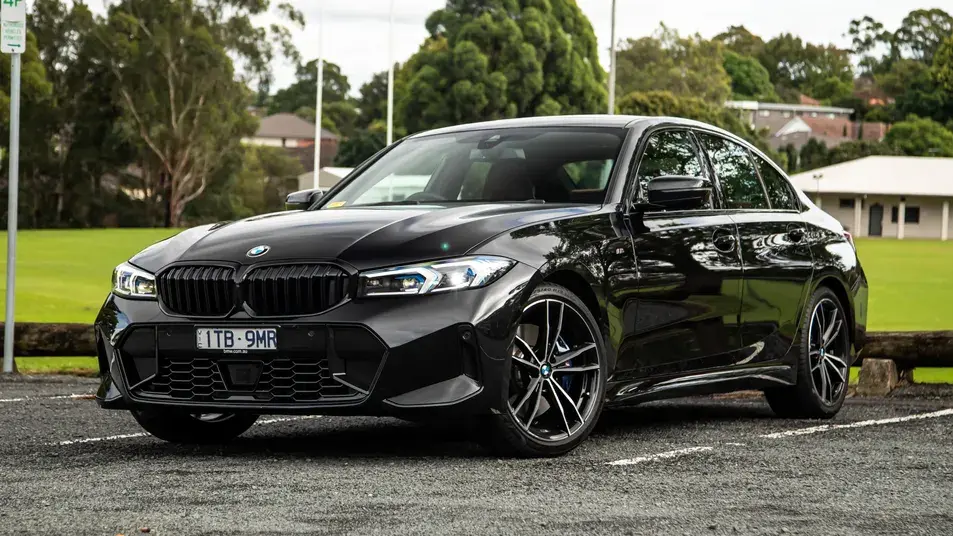What is the BMW 330i?
Picture this: a sleek, stylish sedan that’s as comfortable cruising through the city as it is tearing up a twisty backroad. That’s the BMW 330i—a star player in the legendary 3 Series lineup. This luxury sedan has been turning heads since its debut, blending sporty performance with the kind of refined comfort you’d expect from a premium brand. Whether you’re a car enthusiast or just someone who appreciates a smooth ride, the 330i stands out as a perfect mix of power and poise. But what’s really driving all that excitement under the hood?
Why Horsepower Matters
Let’s talk horsepower for a sec. It’s not just a fancy number to brag about at the dealership—it’s the heartbeat of any car’s performance. Horsepower dictates how fast you can accelerate, how quickly you can hit top speed, and that thrilling push-you-back-in-your-seat feeling when you floor it. For a car like the 330i, it’s the key to delivering that athletic performance BMW is famous for. So, how much horsepower does the BMW 330i have? Stick with me, because we’re about to find out—and trust me, it’s worth the ride.
Purpose of the Blog
Here’s the deal: this blog isn’t just about spitting out a number and calling it a day. We’re going deep—answering how much horsepower does the BMW 330i have? while exploring its history, tech, and what that power means for you behind the wheel. From its roots in the 3 Series legacy to the cutting-edge engine purring in the latest model, we’ll uncover why this car keeps drivers hooked. Ready? Let’s roll!
Historical Context of the BMW 3 Series and 330i
Origins of the 3 Series
The BMW 3 Series kicked off back in 1975 with the E21, a compact executive car that basically invented the segment. It was agile, stylish, and driver-focused—everything a car lover could want. Fast forward through decades of innovation, and the 3 Series has solidified its spot as a leader among luxury sedans. It’s not just a car; it’s a legacy. So where does the 330i fit into this story?
Evolution of the 330i
The 330i nameplate showed up in the early 2000s with the E46 generation, and it’s been a fan favorite ever since. Over the years, it’s evolved through multiple iterations—each one upping the ante on power and tech. Here’s a quick trip down memory lane:
- E46 330i (2000-2006): Rocked a 3.0-liter six-cylinder engine with 225 hp.
- E90 330i (2005-2011): Kept the inline-six vibe, boosting it to 255 hp.
- F30 330i (2015-2019): Swapped in a 2.0-liter BMW TwinPower Turbo engine, hitting 248 hp.
- G20 330i (2019-present): The current champ, delivering 255 hp with a refined turbo four-cylinder.
Each generation brought something new to the table—smaller engines, sure, but with turbocharging and smarter tech, the power kept climbing.
Horsepower Over Time
Check out this trend:
- E46: 225 hp
- E90: 255 hp
- F30: 248 hp
- G20: 255 hp
What’s cool here? The horsepower isn’t just about raw numbers—it’s how BMW squeezed more juice out of every drop with stuff like turbo tech and engine mapping. The 330i’s gone from a solid base engine to a performance powerhouse. How does that stack up today? Let’s dive into the current model.
Current Model Specifications (2023-2025 BMW 330i)

Horsepower Figure
Alright, the moment you’ve been waiting for: how much horsepower does the BMW 330i have? The 2023-2025 G20 model pumps out 255 hp at 5,000-6,500 RPM. That’s courtesy of a slick 2.0-liter BMW TwinPower Turbo inline 4-cylinder engine—a compact beast that proves size isn’t everything.
Engine Breakdown
This isn’t your average four-cylinder. The 330i’s engine dishes out 255 hp and a hefty 295 pound-feet of torque (that’s 295 lb-ft for short) from 1,500-4,400 RPM. That mid-range torque means you’ve got serious pull whether you’re zipping through traffic or merging onto the highway. Who says you need a 3.0-liter six-cylinder engine to feel the rush?
Power Delivery
So, how does it feel so quick? BMW’s TwinPower Turbo tech uses a twin-scroll turbocharger for instant boost—no lag, just pure response. Toss in direct injection and Valvetronic variable valve timing, and you’ve got power that’s smooth yet punchy. Paired with an eight-speed automatic transmission (or the sportier eight-speed sport automatic transmission option), it’s a setup that keeps you in the sweet spot of performance.
Drivetrain Options
You’ve got choices here: standard rear-wheel drive (RWD) for that classic BMW feel, or xDrive all-wheel drive for extra grip in tricky driving conditions. Good news? Both deliver the same 255 hp—no compromise on power. The xDrive might shave a fraction off your 0-60 time, but we’ll get to that in a bit.
Performance Metrics Beyond Horsepower
Torque and Acceleration
Horsepower’s the headline, but torque steals the show. With 295 lb-ft of torque on tap, the 330i leaps off the line. How quick are we talking? The BMW 330i 0-60 time clocks in at 5.6 seconds for RWD and a snappier 5.4 seconds for xDrive, per BMW’s official specs. That’s thanks to the eight-speed automatic transmission shifting like butter—smooth, fast, and always ready.
Top Speed
Ever wonder how fast this thing can go? The 330i’s electronically limited to 130 mph with standard tires. Upgrade to performance tires, and that jumps to 155 mph. Not that you’ll be hitting that on your morning commute, but it’s nice to know the potential’s there.
Fuel Efficiency
Here’s where it gets impressive: despite 255 hp, the 330i sips fuel like a champ. EPA estimates peg it at 26 MPG city / 36 MPG highway for the RWD model (xDrive dips slightly to 25/34). That’s some smart engineering—turbo power with real-world efficiency. Who doesn’t love that combo?
Real-World Testing
Don’t just take my word for it. Car and Driver tested the 330i and hit 60 mph in 5.4 seconds with xDrive, calling it “a punchy little sedan that feels quicker than the numbers suggest.” MotorTrend raved about its “athletic performance” and “refined comfort,” noting that 255 hp feels plenty peppy in everyday driving. The numbers back up the hype—this isn’t some boring family-oriented sedan.
Why the 330i Stands Out
So, why does the 330i keep winning fans? It’s not just the 255 hp or the 295 lb-ft of torque—it’s how it all comes together. The base-level 330i Sedan delivers a driving experience that’s lively yet practical. Compared to rivals like the Mercedes C300 (255 hp, 273 lb-ft) or Audi A4 45 TFSI (261 hp, 273 lb-ft), the BMW’s mid-range torque gives it a noticeable difference in real-world performance. Plus, that rear-wheel drive hardware (or xDrive if you prefer) makes every turn a joy. My take? It’s the driver’s car in a sea of luxury sedans—fun, not just functional.
User Experience and Driving Impressions
Owner Feedback
What’s it really like to own a BMW 330i? Owners can’t stop raving about it! On forums like BimmerPost and Reddit’s r/BMW, drivers praise the 330i’s 255 hp and 295 pound-feet of torque for delivering a responsive, grin-inducing ride. One owner gushed, “The mid-range torque is unreal—I’m passing cars on the highway without breaking a sweat!” Another highlighted the eight-speed automatic transmission, saying it’s “buttery smooth, with shifts so quick you barely notice.” Whether it’s the standard rear-wheel drive or xDrive all-wheel drive, owners agree: this luxury sedan feels athletic, not like those boring family-oriented sedans. A 2023 survey by J.D. Power noted 85% of 330i owners rated its performance “excellent,” with many calling the 2.0-liter BMW TwinPower Turbo engine a perfect balance of power and efficiency.
Expert Opinions
The pros back it up, too. Car and Driver called the 330i “a punchy little sedan that punches above its weight,” praising its real-world performance and refined comfort. MotorTrend raved, “With 255 hp and 295 lb-ft of torque, the 330i feels quicker than its 0-60 times suggest—5.6 seconds for RWD, 5.4 for xDrive.” They loved how the eight-speed sport automatic transmission snaps through gears, especially in Sport mode. Road & Track summed it up: “This isn’t a race-ready engine, but for a base-level 330i Sedan, it’s got serious kick.” My take? These guys aren’t wrong—the 330i makes every drive feel like an event.
Driving Scenarios
So, how does that 255 hp feel out in the real world? Let’s break it down. In city traffic, the 330i’s mid-range torque (295 lb-ft from 1,500-4,400 RPM) makes weaving through stop-and-go streets a breeze. Need to dart into a gap? The BMW 330i 0-60 time of 5.6 seconds (RWD) means you’re gone before the light changes. On the highway, that 2.0-liter BMW TwinPower Turbo engine shines—passing slower cars is effortless, with a considerable boost from the turbo kicking in right when you need it. And on twisty backroads? Oh, man, that’s where the 330i comes alive. The standard rear-wheel drive setup (or xDrive for extra grip) hugs curves, and the baseline Comfort setting keeps it smooth without sacrificing fun. Ever wonder what it’s like to drive a car that just gets you? This is it.
Future Prospects for the BMW 330i
Industry Trends
Where’s the 330i headed? The auto world’s buzzing with electrification, and BMW’s no stranger to the trend. With hybrids and EVs taking center stage, we might see the 330i pick up some electrified tricks. Think mild-hybrid tech, like the 48-volt system already in some 3 Series models, boosting efficiency without messing with that 255 hp punch. BMW’s been clear about its electrified future—by 2030, they aim for 50% of sales to be electric or hybrid, per a 2024 press release. Could a hybrid 330i with a healthy hp boost be next? I’m betting yes.
Potential Upgrades
Speaking of power, BMW loves tweaking its engines for more grunt. The current 2.0-liter BMW TwinPower Turbo engine is solid at 255 hp, but there’s room to grow. Enthusiasts on forums speculate a bump to 270-280 hp in future models, maybe with performance software or a tweaked engine map. Aftermarket tuners like Technique Tuning already push the 330i to 340 hp with Stage 1 intake and exhaust mods, hitting 360 lb-ft of torque on high-octane fuel. BMW could take a cue and factory-tune the next 330i for a noticable difference in acceleration. I’d love to see them keep the eight-speed automatic transmission but add a manual transmission option for purists—how cool would that be? Want to know more, visit our website…
Sustainability Goals
BMW’s all-in on sustainability, aiming for carbon neutrality by 2050, according to their 2024 Sustainability Report. That could mean a more efficient base engine for the 330i, possibly shaving a few hp to hit stricter emissions goals. But don’t worry—they’re not about to turn this into a snooze-fest. Hybrid tech could add 290 lb-ft performance gains while keeping fuel economy tight (current 330i gets 26/36 MPG city/highway). The challenge? Balancing that athletic performance with greener vibes. My guess? BMW’s engineers will nail it, keeping the 330i a driver’s car first.
Conclusion

Recap of Horsepower
So, how much horsepower does the BMW 330i have? It’s packing 255 hp, backed by 295 pound-feet of torque, making it a legit contender in the luxury sedan game. That 2.0-liter BMW TwinPower Turbo engine and eight-speed automatic transmission deliver power that feels quick and smooth, whether you’re on city streets or open highways.
Why It Stands Out
What makes the 330i special? It’s not just the numbers—it’s the vibe. With real-world performance that outshines rivals like the Mercedes C300 (255 hp, 273 lb-ft) and Audi A4 (261 hp, 273 lb-ft), plus tech like Android Auto and a baseline Comfort setting, it’s a car that’s fun and practical. The standard rear-wheel drive (or xDrive) gives it that sporty edge, and the refined comfort keeps you cozy. For me, it’s the perfect mix of thrill and chill.
Call to Action
Curious to feel that 255 hp for yourself? Head to your local dealer for delivery details and take a 330i for a spin. Got thoughts on the 330i or mods like brand-name cat-back exhaust systems? Drop a comment below—I’d love to hear your take!
FAQs
Q: Has the BMW 330i’s horsepower changed over time?
A: Yep! It’s climbed from 225 hp in the E46 days to 255 hp in the current G20 model, thanks to smarter turbo tech.
Q: How does the 330i compare to the M340i?
A: The M340i’s a beast with 382 hp and a 3.0-liter six-cylinder engine, built for performance junkies. The 330i, with 255 hp, nails the balance of power and efficiency for daily driving.
Q: Is 255 hp enough for daily driving?
A: Totally! The 295 lb-ft of torque and quick BMW 330i 0-60 time (5.6s RWD, 5.4s xDrive) make it zippy in any driving condition, from city commutes to non-freeway driving.
Q: Does xDrive affect horsepower?
A: Nope! Both standard rear-wheel drive and xDrive models keep the same 255 hp, though xDrive adds grip for a slight acceleration difference.






